Elderberry herb: description and cultivation
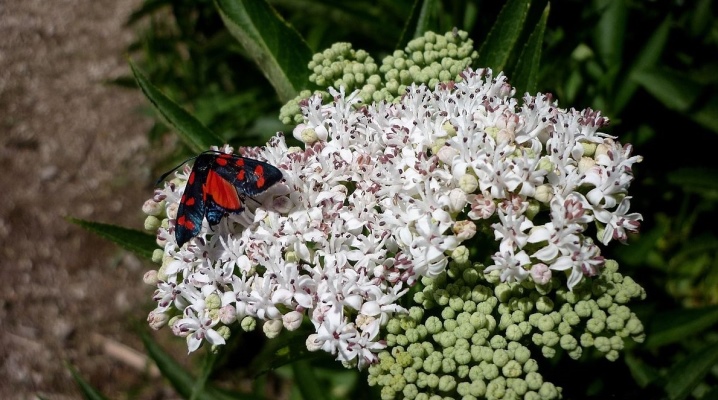
Elderberry herb is a low-growing garden plant with herbaceous shoots. Landscape designers do not consider its characteristic unpleasant smell to be a serious problem at all and even use it to scare away pests from more valuable crops. Elderberry dwarf or herbal has medicinal value, it has an attractive appearance without flashy and too bright colors. The decorative properties of the plant are actively used in the creation of landscape compositions.
Elderberry undersized or smelly belongs to a group of species with a fairly high frost resistance, suitable for planting in most regions of Russia.
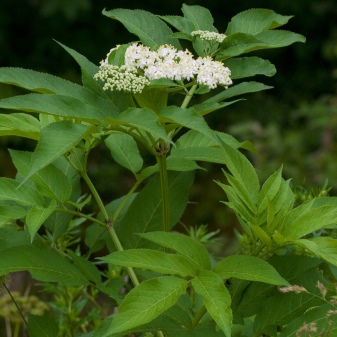
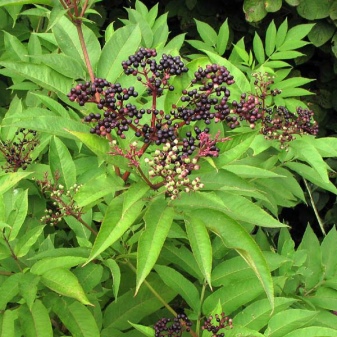
Peculiarities
Herb elderberry (Sambucus ebulus) is an unusual plant for its kind. It is a dwarf perennial with herbaceous, not shrub or tree-like shoots. The undersized smelly variety, even in its description, has significant differences from other plant subtypes. The elderberry grows no more than 1.5 m, has an elegant, carved foliage pattern. Openwork and lush shoots rather quickly increase their mass during the flowering period, green shoots are complemented by white umbrellas of inflorescences from May to June.
Elderberry herb belongs to cold-resistant plants, it can withstand light frosts down to -4 degrees, in winter it does not die without shelter when atmospheric temperatures drop to -29 degrees. In other cases, herbaceous shoots are cut off at the root and carefully covered, you can fill them with sand with the addition of ash.
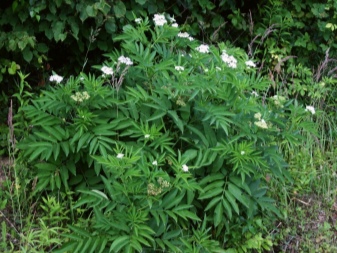
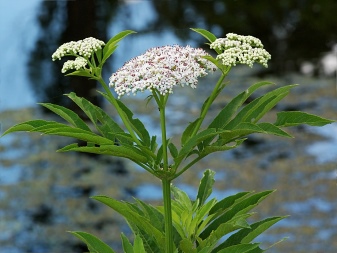
A serious problem with uncontrolled reproduction is the active growth of the smelly elderberry rhizome. She really quickly builds up a mass of greenery, creeping over the surrounding area. It is recommended to take this into account when landing, if necessary, digging in obstacle screens or choosing a place where such a feature will not be an obstacle. It is also important to remember that all parts of the plant are poisonous, especially for unripe fruits. When mature, they are safe and can be eaten like other elderberries.


How to plant?
Elderberry herb is a spectacular medium-sized plant with a straight stem and a powerful rhizome. Planting it in open ground most often does not create any particular difficulties. It is carried out by sowing seeds or transferring a seedling after dividing the roots. In nurseries, this species is usually not grown, but it can be easily found in nature - in the landscape of forests, forest-steppe massifs, in ravines, along the banks of rivers and rocky slopes.
When planting on the site, it is necessary to choose the right place for growing herbaceous elderberry. She needs soil acidity in the range of 6.5-8 pH. For planting, it is better to choose sunny, well-lit areas, but you can place the plant in partial shade. Among the varieties of soil, loam is preferred, on which this plant thrives best. When planting, it is recommended to maintain a distance between the holes of at least 1 m.
When dividing the roots, planting is carried out in the spring. Sowing seeds in open ground is carried out in the autumn.
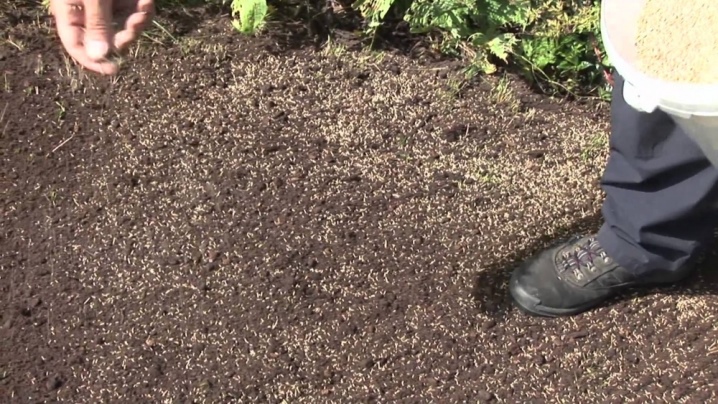
How to take care of it properly?
When growing on a plot of herbaceous elderberry, the owner does not have to spend a lot of effort on caring for it. It is necessary to provide the plant with certain conditions.
- Sufficient sun and shelter during cold winters. This will allow you to achieve the desired splendor of the shoots, prevent them from wilting and freezing.
- Pruning... It can be a necessary measure - to protect against cold weather in winter. In addition, pruning can be decorative in nature, provide the plant with the formation of a spectacular appearance, original outlines.
- Maintaining soil breathability. When planting, the pit is drained, then the soil at the base is regularly loosened and mulched. This will help ensure the flow of oxygen to the roots, preventing them from souring. The humidity level at the planting site should be moderate.
- Fertilization... Top dressing of herbaceous elderberry is made as needed. Usually, for this, the period of the beginning of the growing season is chosen, when the plant is most responsive to the introduction of minerals and organics.
- Shelter in the winter. If there is a risk that the winter temperature will drop to -29 degrees and below, it is better to cut off the entire aerial part of the plant in autumn and cover it with peat or mulch. In other cases, preparation for winter is not required.
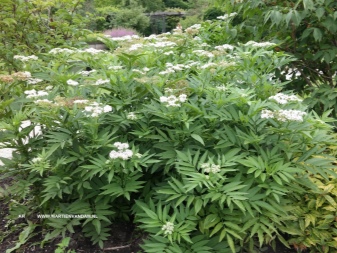
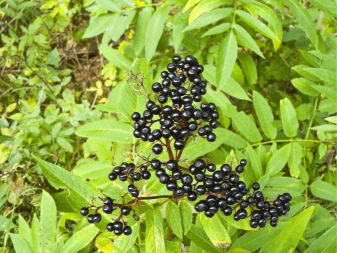
Reproduction methods
Among the existing methods of reproduction of herbaceous elderberry, seed and vegetative, using separate parts of the bush, can be distinguished. The simplest is the use of autumn sowing. The seeds are not planted for seedlings, but immediately placed in open ground in late autumn, but before the onset of frost.
Spring sowing is also possible. In this case, the harvested seed is pre-stratified. The procedure is carried out for 2 months at a temperature of 0 to +5 degrees. After stratification, the seeds are kept at room temperature for some time and only then sent to open ground. They are placed on a prepared, dug area, lightly sprinkled with earth and watered.
When planting in spring, vegetative propagation is also used by dividing the rhizome. This method is used after the snow has melted. The root of the plant is divided into several parts and planted in a new place. The plant is distinguished by high rates of survival of shoots, it successfully fixes even in not the most favorable conditions for growth.


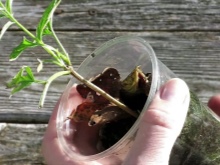
Diseases and pests
Due to its strong, pungent smell, smelly or herbaceous elderberry has practically no enemies in nature. This plant itself is the best measure for preventing the appearance of pests on the site. However, this does not exclude the appearance of spider mites or aphids on the leaves... Timely treatment of plantings with soapy water or acaricidal preparations will help to solve the problem and prevent the spread of parasites in the garden.
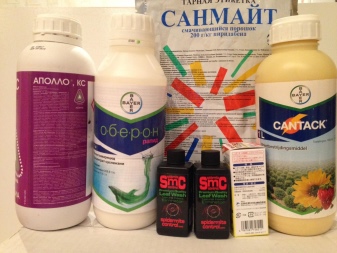
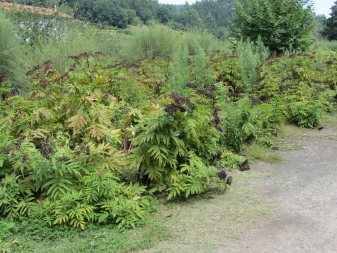
Use in landscape design
Elderberry herb is quite popular in landscape design. It can be used as a honey plant, used in urban and park landscaping, due to its high resistance to atmospheric pollution, it is not sensitive to the purity of the environment.
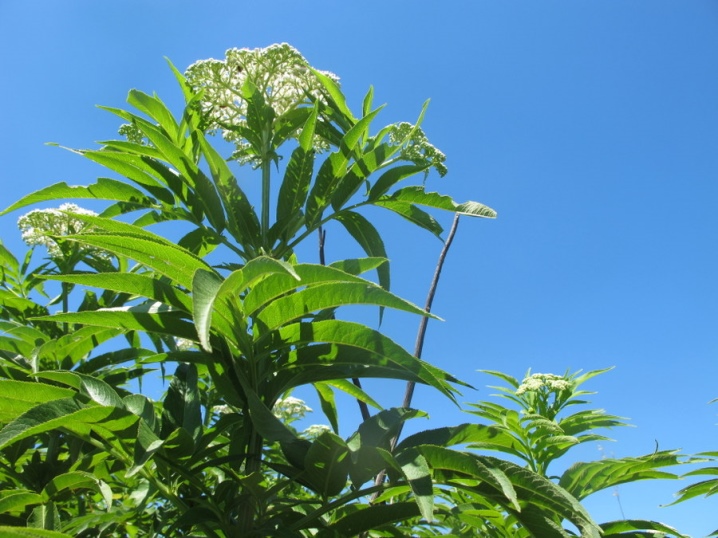
The characteristic unpleasant odor emitted by smelly elderberry sometimes serves to protect the garden from pests, including rodents, and from some harmful insects.
In its natural form, this herbaceous plant is well suited for use as an element of today's popular forest or natural garden landscapes. It can be used to decorate shaded areas of the site where it is difficult to grow other crops. Elderberry herb is well suited for decorating the shores of reservoirs.
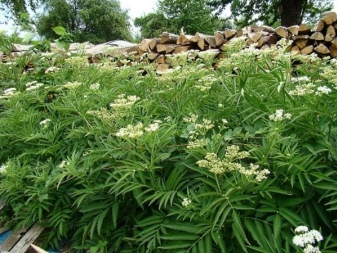
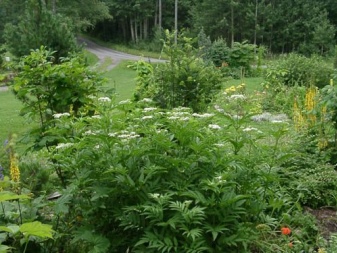
See below for proper elderberry care.































































The comment was sent successfully.